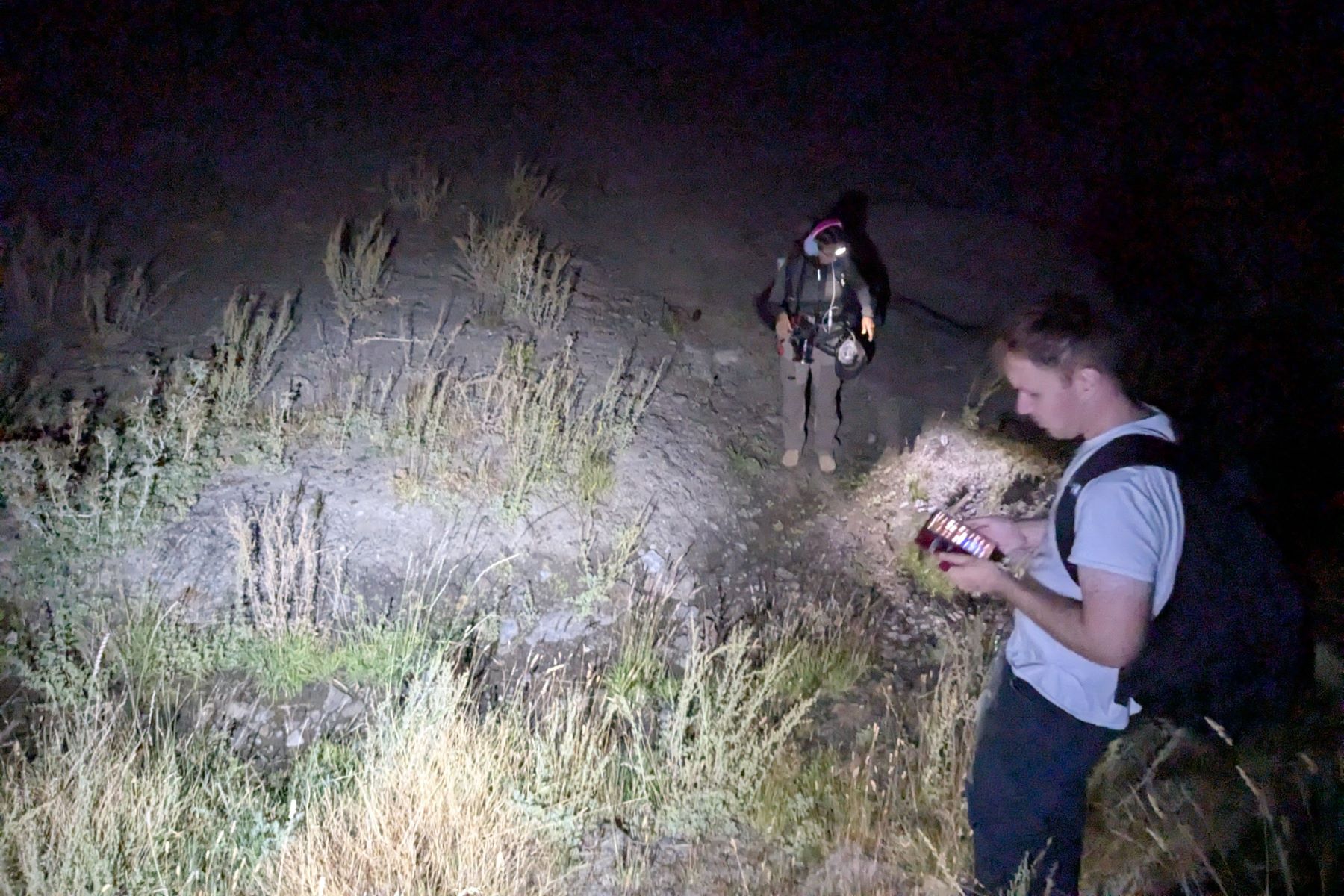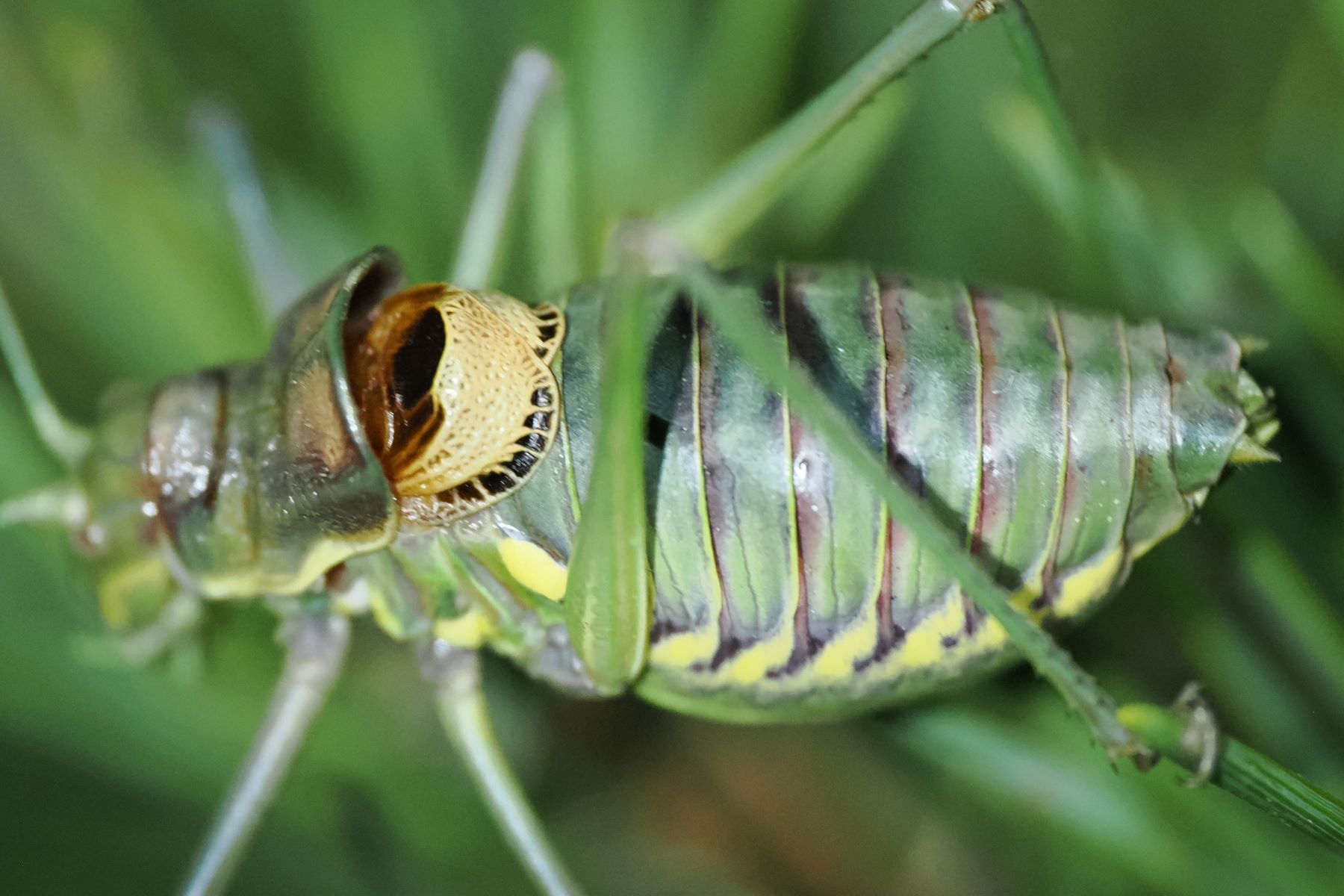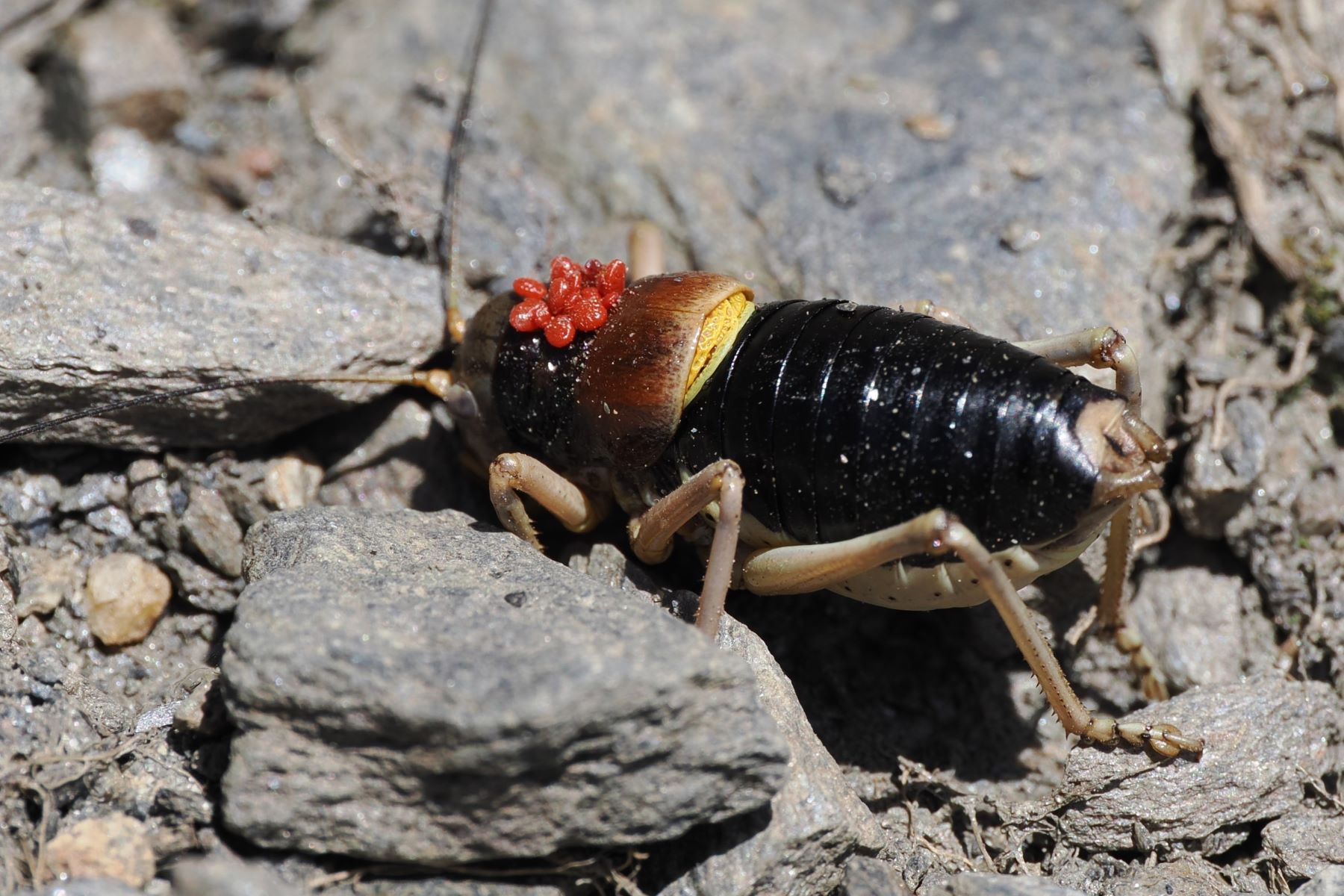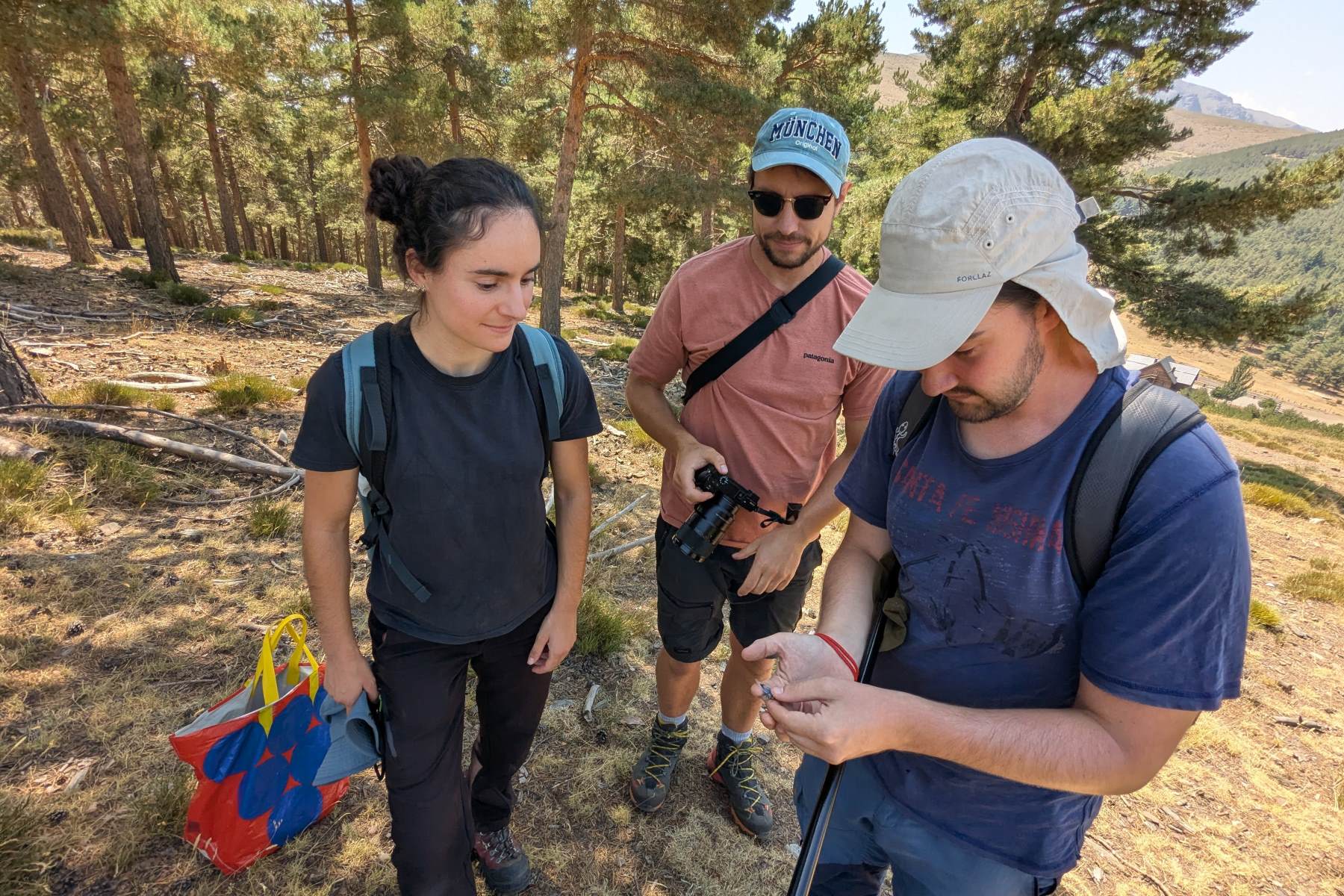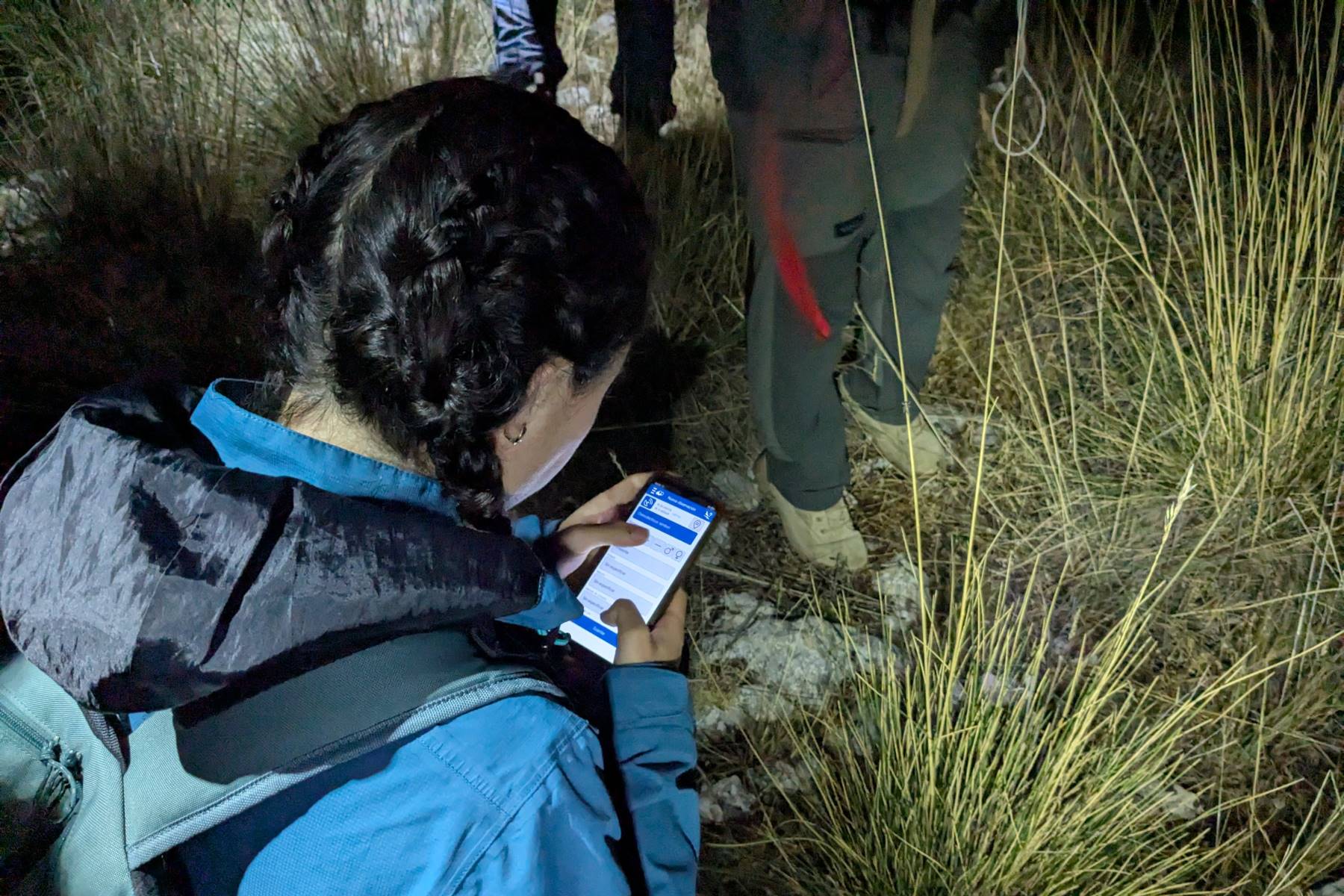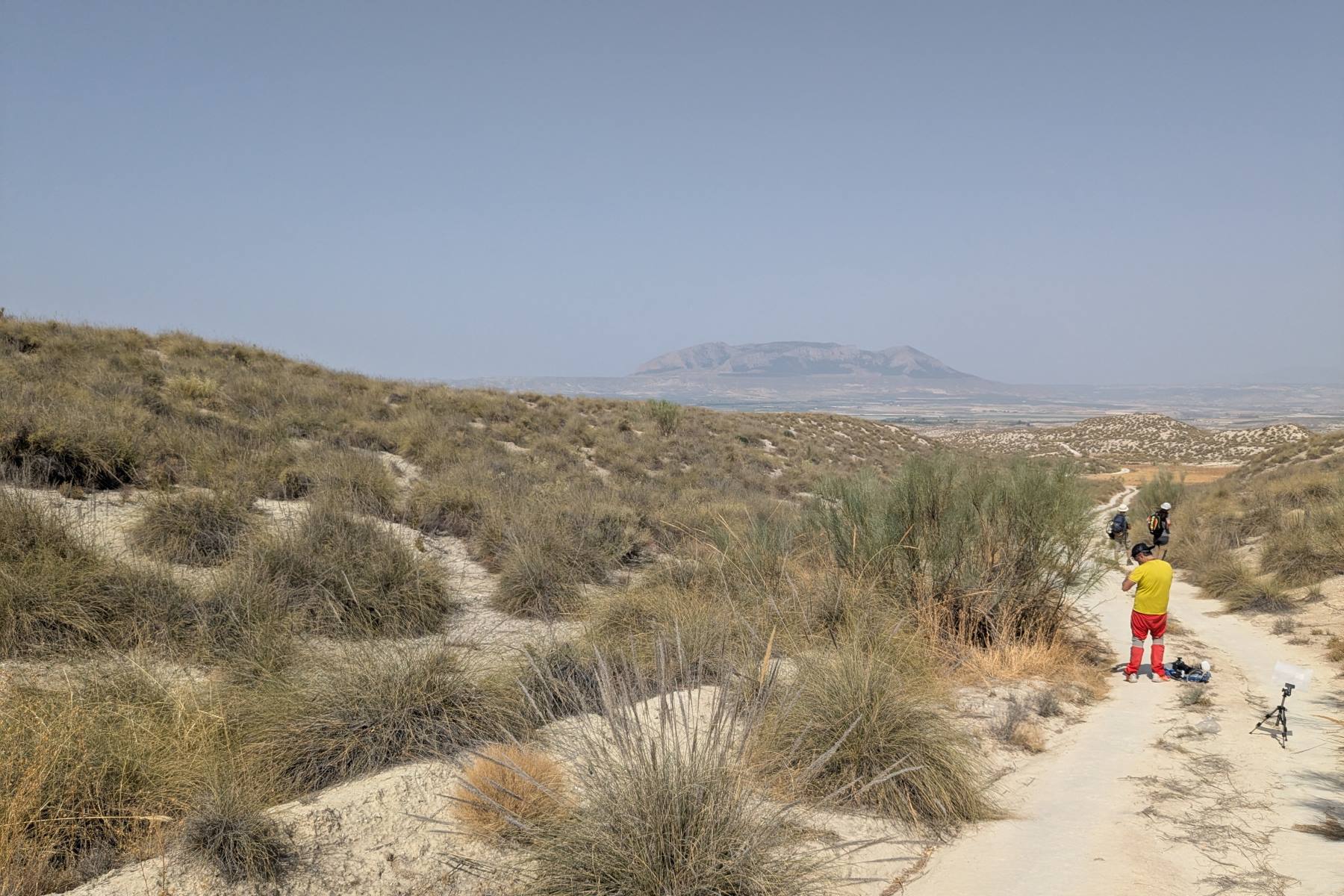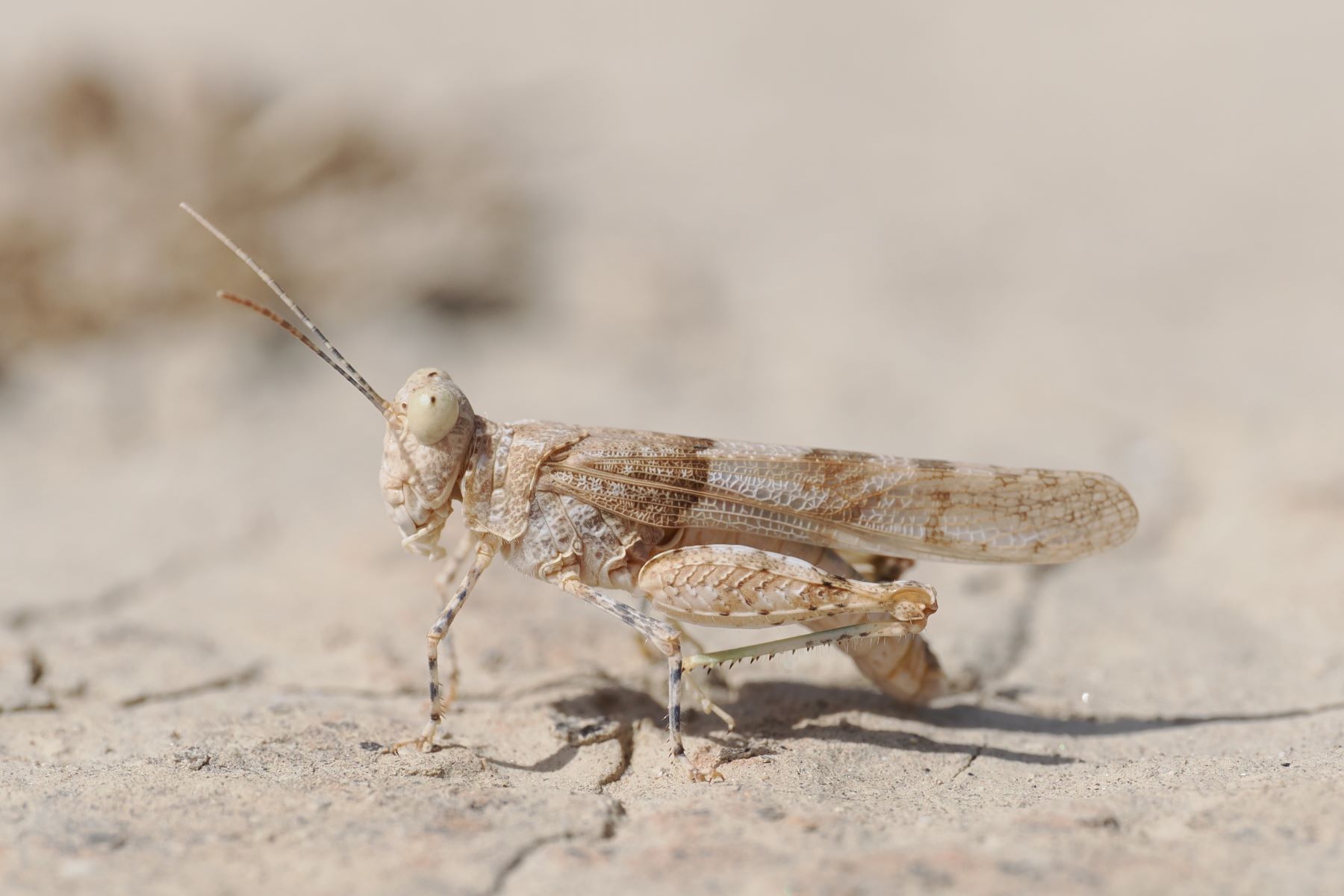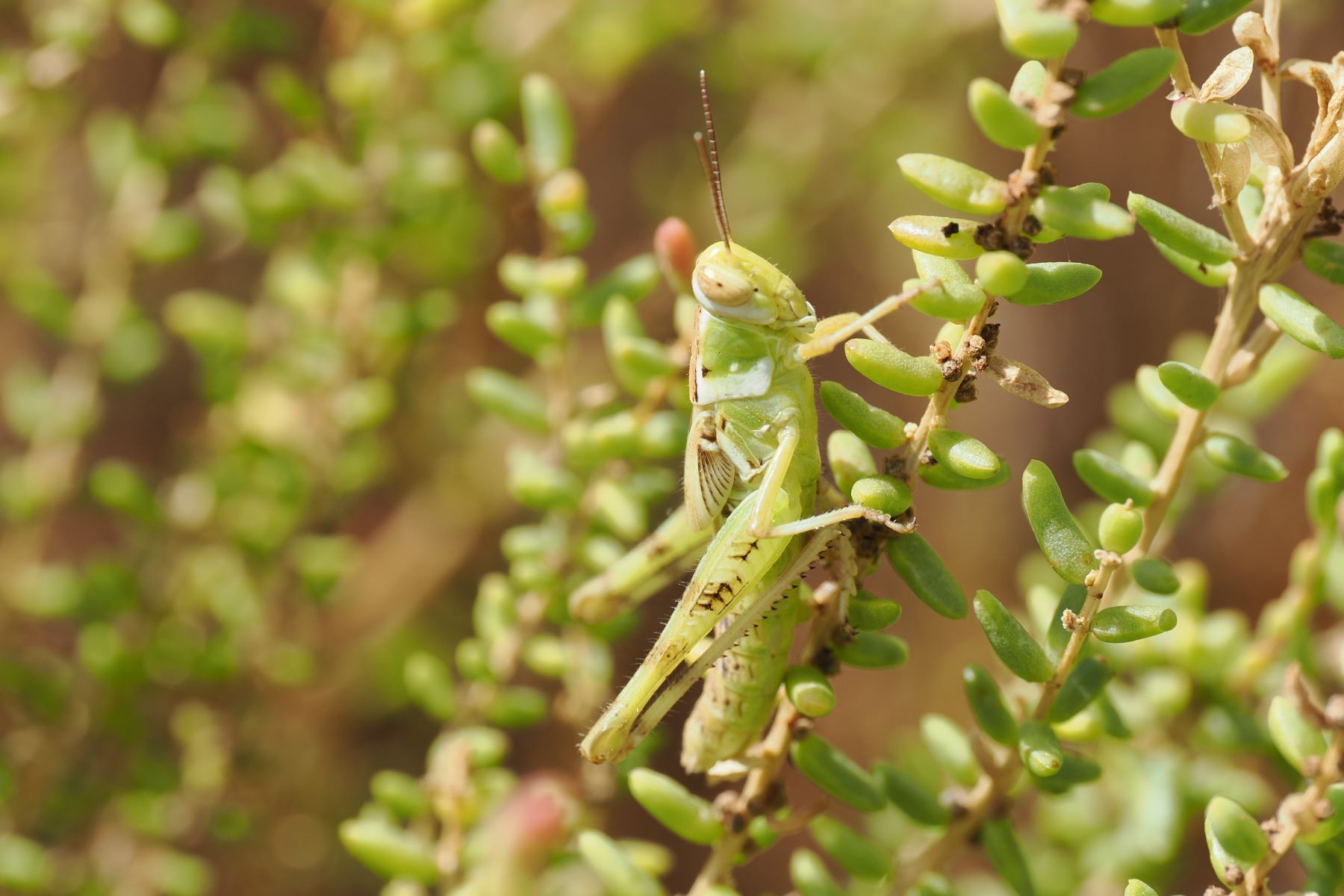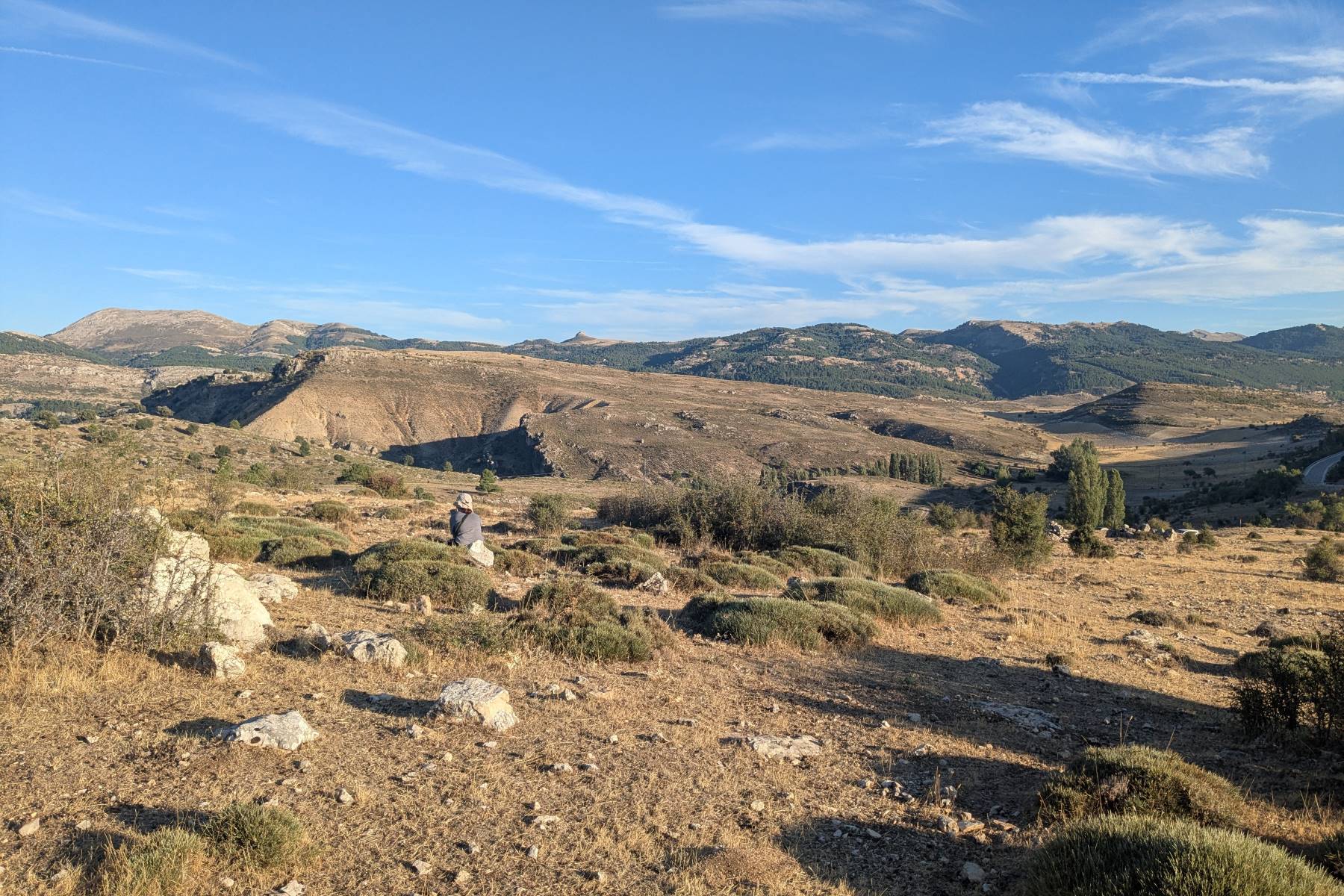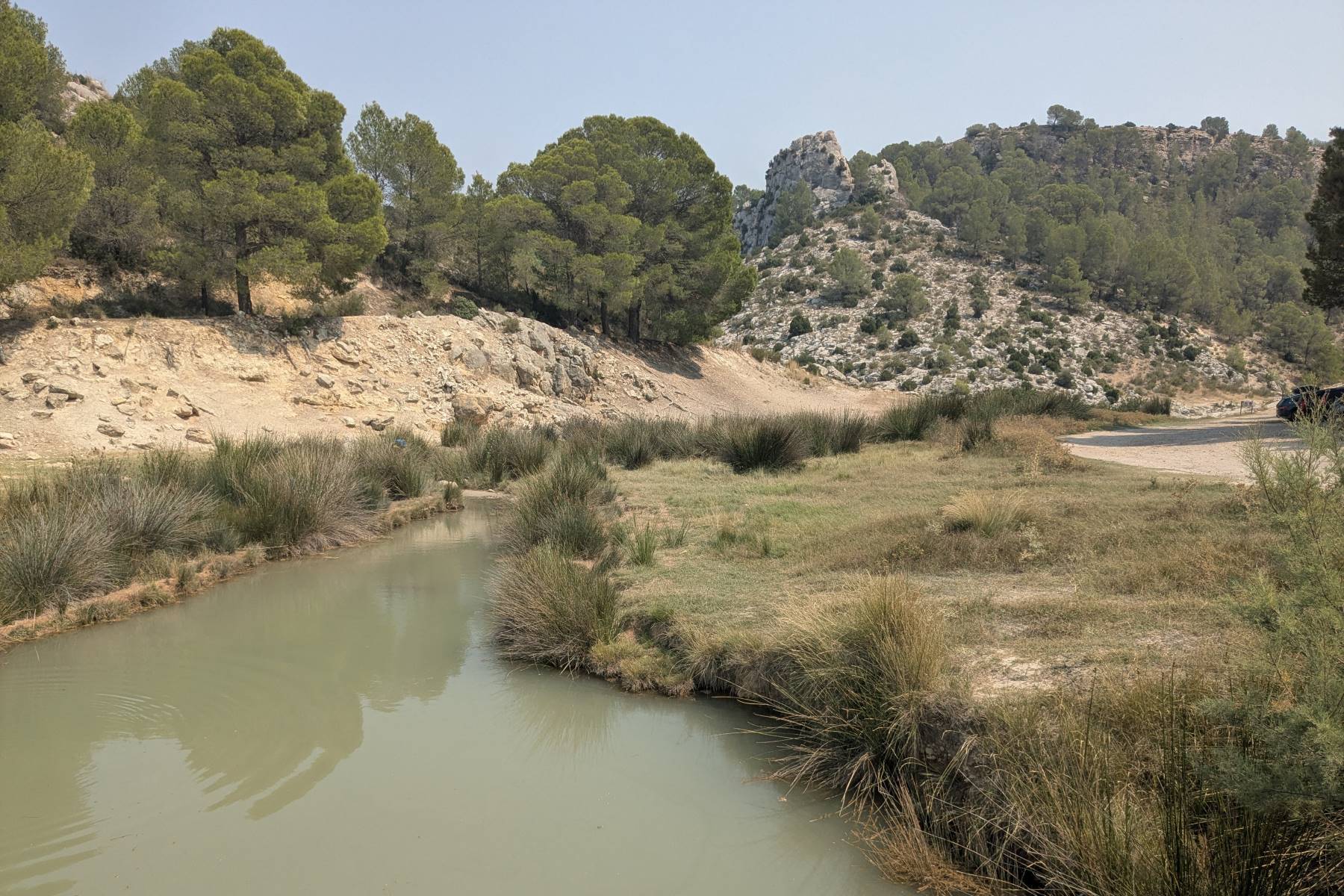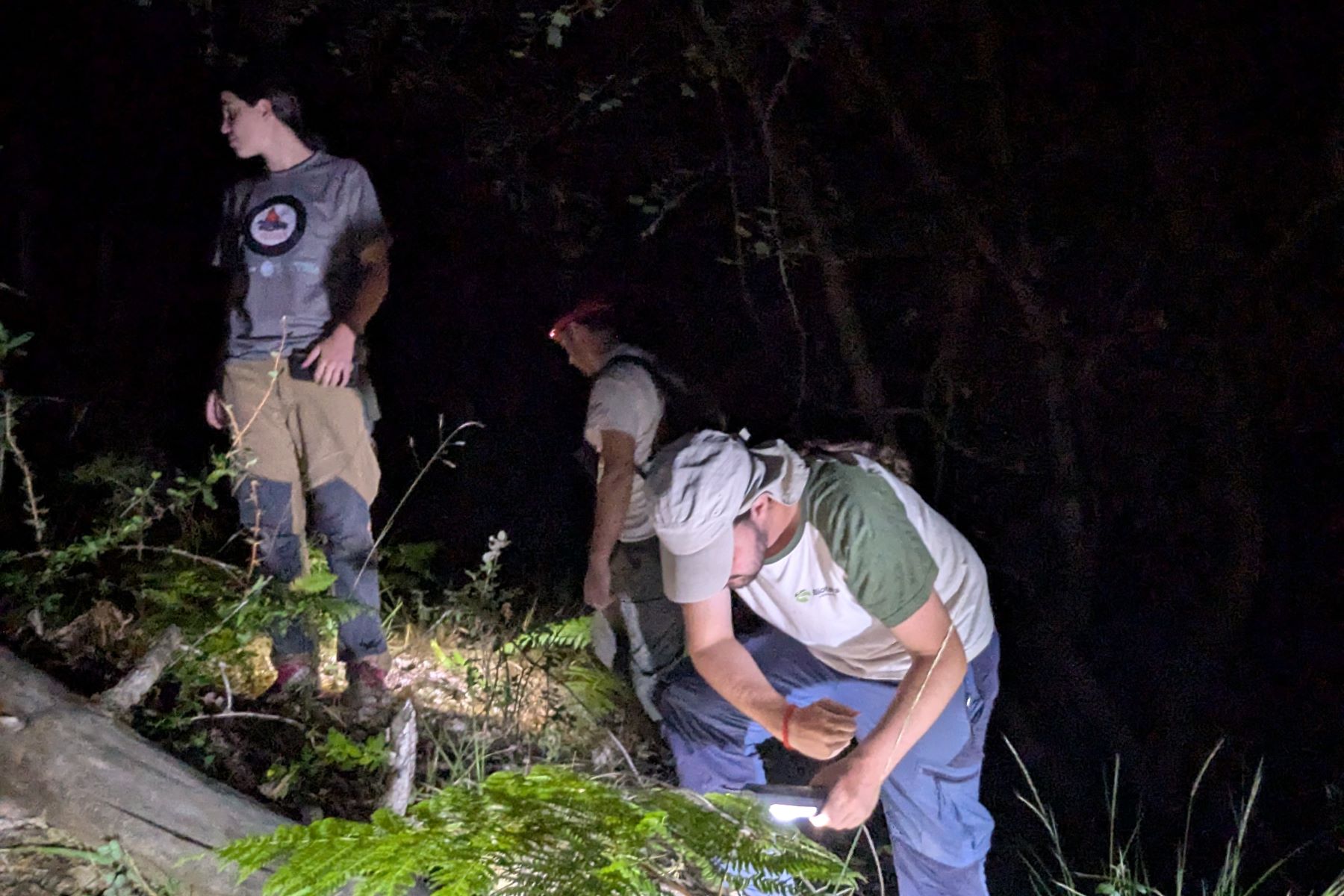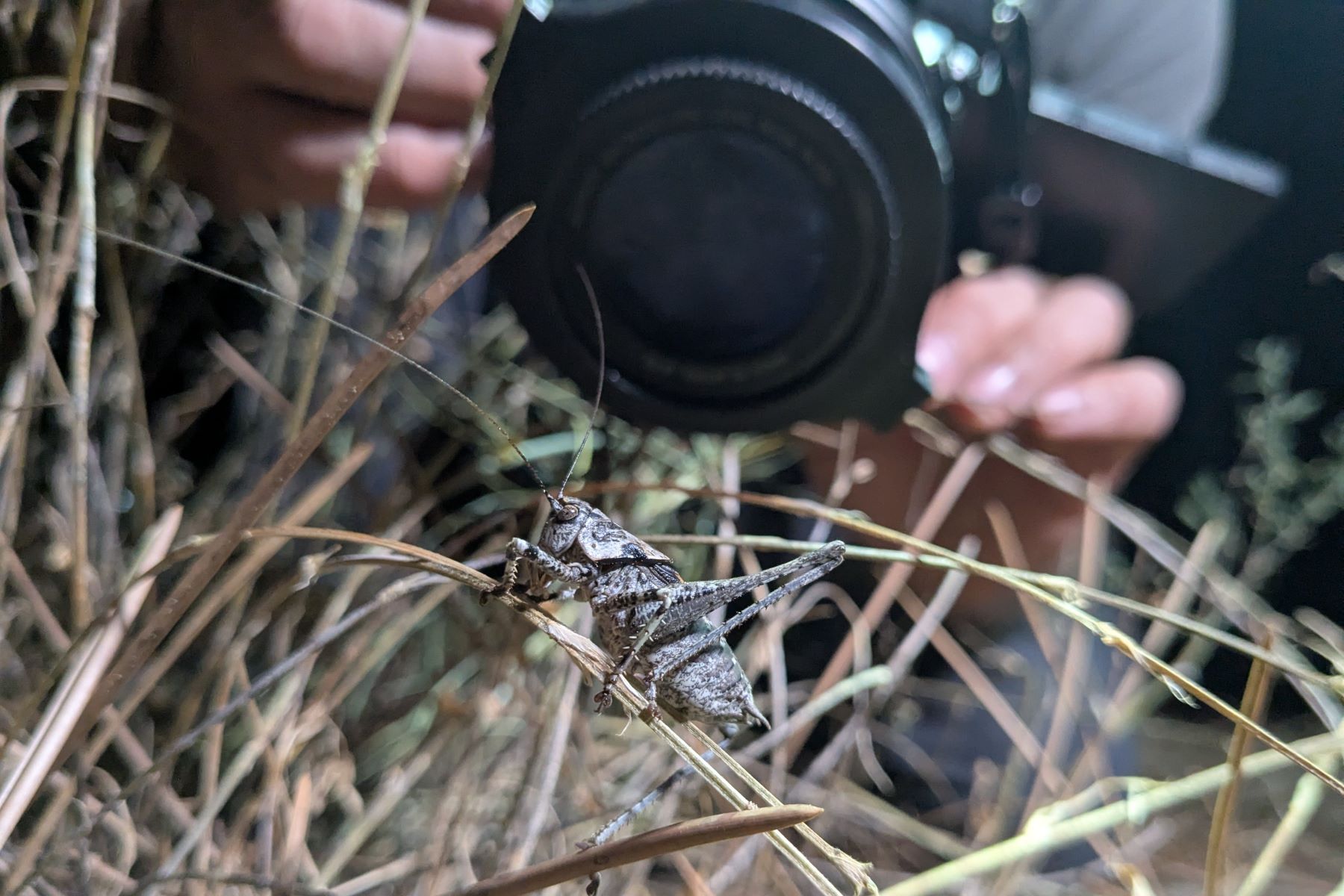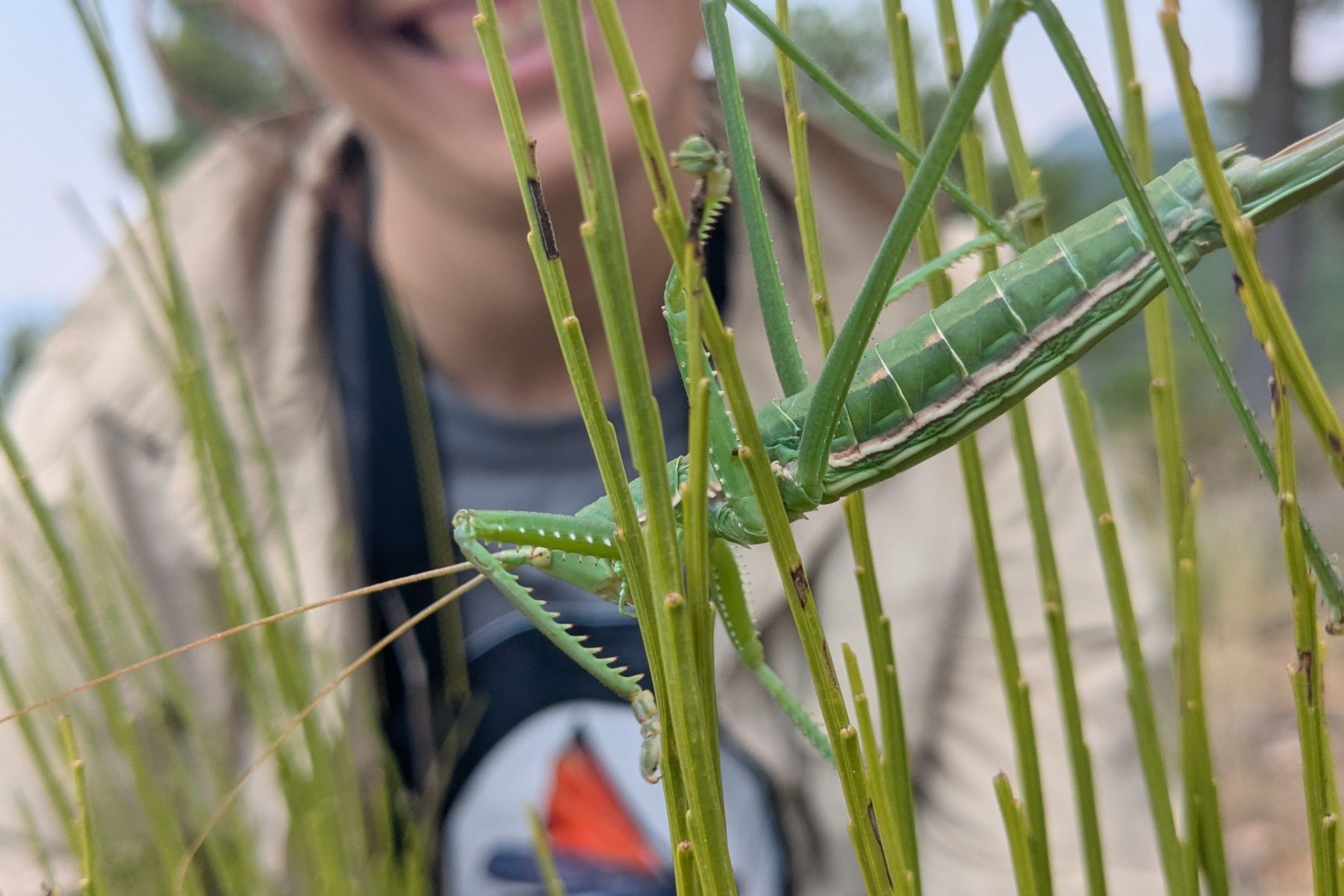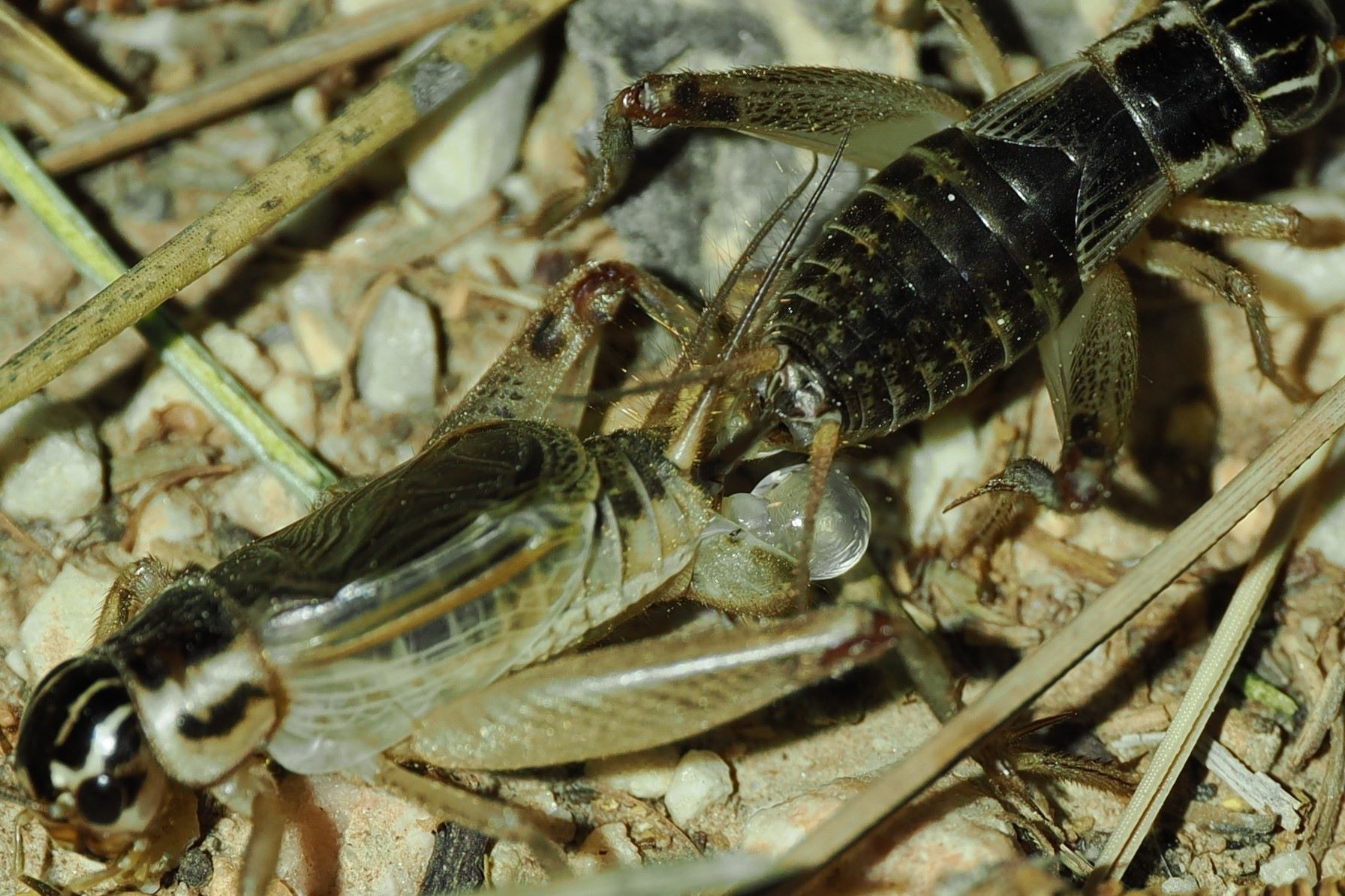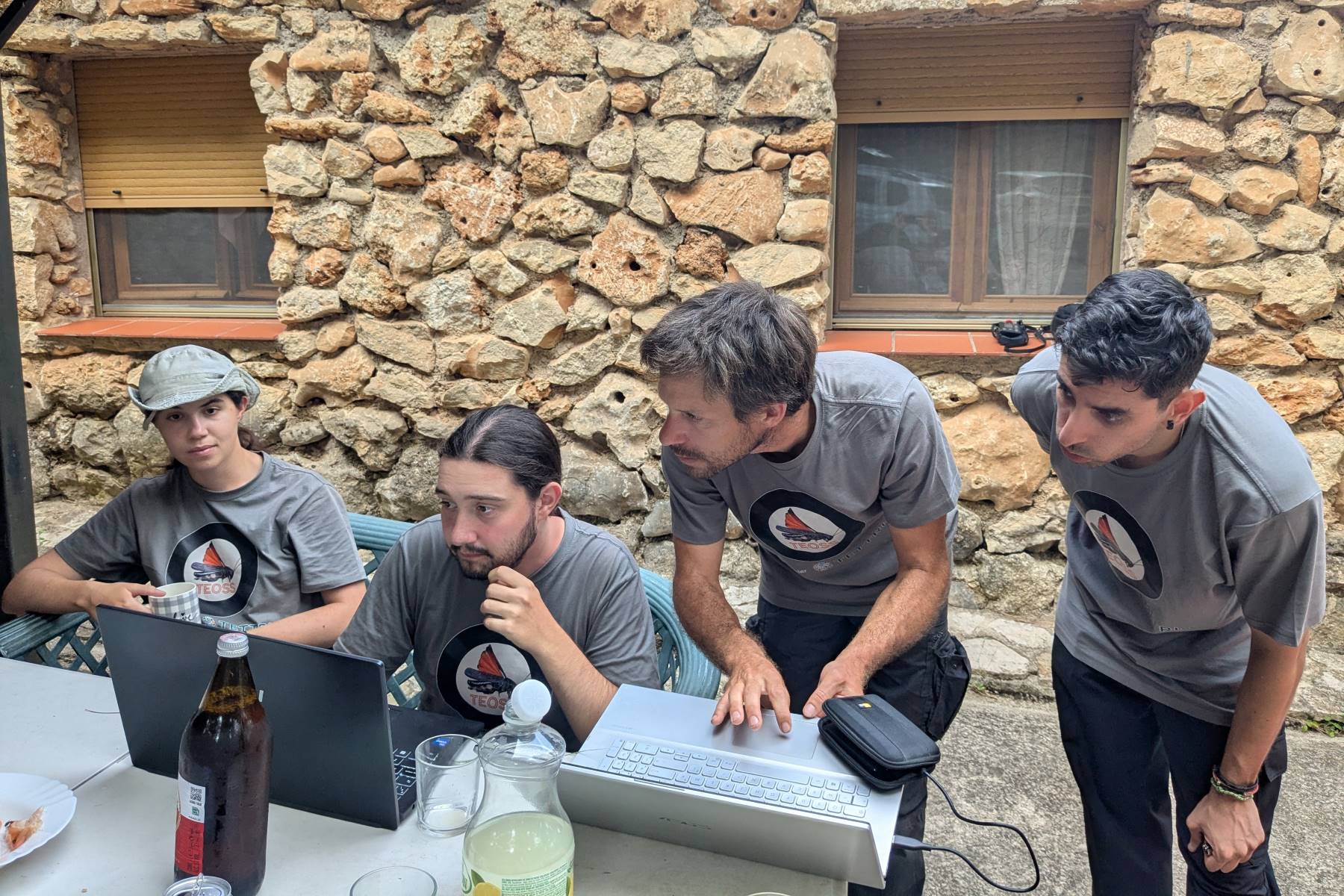The latest TEOSS event within the TETTRIS program consisted of a study trip to southern Spain with a select group of participants who were familiar with the methodology and data collection protocol. Our mission was to explore several natural areas to record endemic species that were underrepresented or poorly represented on the Xeno Canto platform. By assembling an expert group, the expedition proved to be very fruitful.
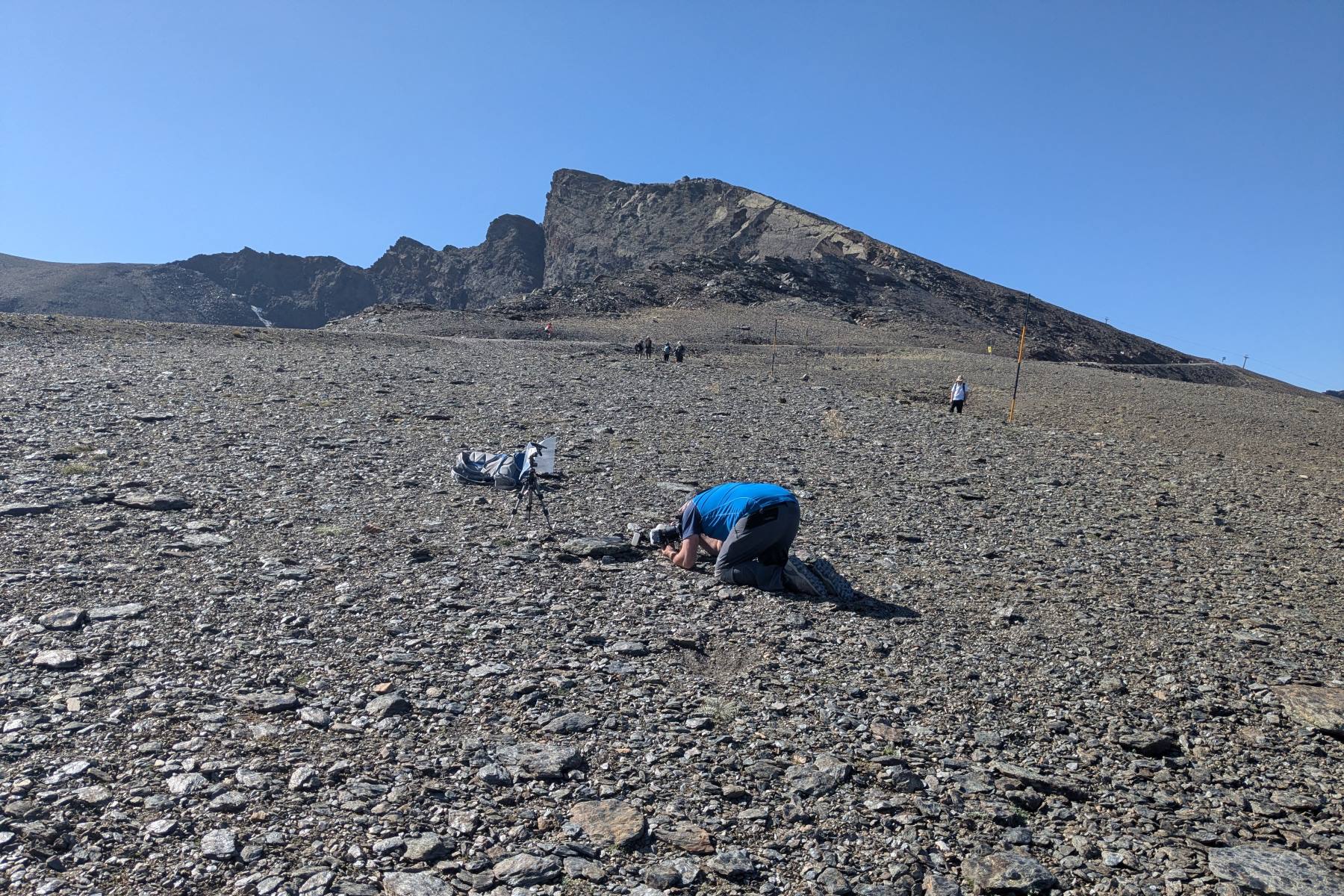
The high mountain cryo-Mediterranean floor of the Sierra Nevada and Pico Veleta, with the TEOSS participants in full swing, all busy with our first Baetica ustulata.
The members of the TEOSS-5 event were:
- Sebastian König. Ecosystem Dynamics and Forest Management Group, School of Life Sciences, Technical University of Munich, Germany.
- David Bennett. Christian Albrechts Universität zu Kiel. Germany.
- Julien Barataud. Independent researcher on Orthoptera.
- Ginés Rodríguez. Universidad de Córdoba.
- José Ramón Correas González (Ortópterologo, Madrid)
- Callista Sivori (Universidad de Toulouse, estudiante de Máster, Francia)
- Olga Fernández Enríquez (TEOSS, AEA El Bosque Animado, Zamora)
- Marta ViIlasán (TEOSS, AEA El Bosque Animado, Badajoz)
- Florent Prunier (TEOSS, AEA El Bosque Animado, Málaga)
- Álvaro Alemany (Iberozoa, Sevilla)
- Miguel Domenech Fernández (SEACAM, Albacete)
- Alonso Ródenas Fernández (SEACAM, Albacete)
_
Day 1. From the first moments
Transfer to Prado Llano near the city of Granada. At an altitude of 2,078 meters above sea level, the ski resort has a pleasant summer climate and is conveniently located for exploring the legendary Sierra Nevada.
We began our expedition with a very fruitful night excursion around Pradollano (sampling results at Observation.org), with the detection of the Sierra Nevada’s Steropleurus, a cryptic taxon recently detected by Gutiérrez et al. preprint).
We also managed to record the stridulations of Pycnogaster inermis, another genus endemic to the Iberian Peninsula and also an emblematic species of the Penibética mountain ranges. The insect was hidden among the vegetation and we were unable to spot it. At the time of our visit, this species was represented by 15 recordings on the Xeno Canto platform, all by K.-G. Heller (historic trip of 1984) and Baudewijn Odé (Bioblitz Baza 2017 organized by AEABA; 2022). The studio recording is spectacular.
Day 2. Nevada’s endemic species
On the slopes of Veleta, the cryo-Mediterranean bioclimatic zone extends, where only scattered plants survive among rocks fractured by ice. It is inhabited by a unique community of endemic orthopterans adapted to these extreme conditions.
Among them, Baetica ustulata stands out, a peculiar black-bodied ensiferan, a monotypic genus close to Uromenus and emblematic of Sierra Nevada, a species with discreet habits that takes refuge under rocks during the warmest hours, moves quickly at midday seeking shade and stridulates under creeping bushes. The species is abundant at this time of year. Other high mountain endemic species of the Betic region also appear, such as Chorthippus nevadensis and Omocestus bolivari. We were pleased to detect a good population of Myrmeleotettix on the same ascent to Veleta. This genus is known in the Sierra Nevada bibliography only from a single female specimen Myrmeleotettix maculatus subsp. australis Harz, 1975. Results
At night, we descended in altitude to the Botanical Garden (results) and Collados Güejar (results). A mythical species abounds in the treetops, which we were unable to observe despite extensive sampling efforts, but we were able to record it with the ultrasound detector without any possibility of error. It was Canariola emarginata, confirming the presence of a species in Sierra Nevada that until now had only been previously recorded once in the mountain range, on the Virtual Biodiversity platform (2016).
During the expedition, the ultrasound detector set a record for detecting canariolas, which are abundant but very discreet, as their song is emitted entirely outside the human audible range. Crickets are also notable: Eugryllodes pipiens, Gryllomorpha uclensis, Gryllomorpha longicauda, and Oecanthus pellucens. The sonority of the pipiens is striking, as they do not chirp in the same way as their counterparts at La Demanda.
Day 3. Breaking altitude barriers
We move east, continuing our exploration of the Sierra Nevada, this time on the border with Almería, a province often forgotten to be home to much of this legendary mountain. A long day reflects the richness and ecological contrast of the Orthoptera in this region. On our route to Puerto de la Ragua, after leaving behind the castle of La Calahorra and ascending toward the mountain pass at over 2,000 meters above sea level, we encounter a very dry landscape where the Orthoptera show diversity depending on their habitat.
At Location 1, a hillside thicket, we observed populations of Omocestus bolivari and Eumigus nymphs, well adapted to the scarcity of vegetation. We were particularly surprised by the presence of Acrotylus patruelis at this altitude, with several specimens observed at over 2,000 meters above sea level (!). At Location 2, on dry grasslands and bare soil, the density of grasshoppers was very high, with an abundance of species such as Dociostaurus maroccanus, typical of arid environments, and finally we detected Antaxius kraussi. At Location 3, near the edge of the Palacón stream, the humidity favored the presence of Pseudochhorthippus parallelus erythropus and Omocestus panteli, specialists in wet grasslands. We conclude the Sierra Nevada chapter with practically all the species sighted (we were missing the Ctenodecticus).
We continued toward Gor, and as night fell, we explored the dry riverbed, where a veritable festival of ensifera erupted (results): abundant Platycleis and long legged bushcrickets of the genus Pterolepis sang among the bushes. There, we also spotted the tiny Trigonidium cicindeloides, the “sedge cricket,” whose record at around 1,300 m altitude seems completely unusual.
Día 4. La recompensa en Sierra de Baza
The day started badly… And when the dog is weak, it’s all fleas. We suffered food poisoning, diarrhea, heatstroke, wrong directions, and a two-hour wait in a restaurant in the sweltering heat. To top it all off, a storm and rain in the middle of the Baza Mountains. A tough day, one you’ll never forget… Anyway, we set off very late to look for Sphingonotus octofasciatus in the Hoya de Baza. The attempt failed.
At the end of the day, we headed to Prado del Rey at the top of the Baza Mountains. The pasture has been overgrazed for years, and this is evident in the Orthoptera community. We were able to at least confirm the presence of O. bolivari.
A very heavy downpour caught us, and it seemed like it was going to be one of those bad days—really bad. On the way back, we stopped in the forest, and it seemed that with a 12-egg Spanish tortilla, life takes on a different color. We began to enjoy the multiple sightings of Canariolas, both green and brown, singing at the ends of the pine branches. A multitude of Forficula scurried about on the trunks.
Day 5. Se nos va la hoya (We’re losing our way)
We left the cave houses where we had been happily staying, once again in search of Octofasciatus. Perhaps the season is over for the species, because we won’t see it.
On the way, we stopped at the Saladar del El Margen, where a dense population of the rare Mioscirtus wagneri and a major surprise awaited us with Heteracris adpersa, a new species for the province of Granada.
We travel north, reaching the Granada Plateau and Puebla de Don Fadrique. After a well-deserved lunch and a stop at our spectacular accommodation, a tastefully renovated mill, we spend the night sampling Puerto del Pinar. Indeed, this expedition invests a lot of time in night sampling, for a variety of reasons: it’s the period when the Ensiferans (no less than two-thirds of the species) tend to be most abundant and easiest to detect, especially the Ephippigerini. Furthermore, with the drought and the drying up of the grasslands, the Caeliferous communities are quite reduced, except near wetlands and with the exception of the Sphingonotus, so fond of mineral environments. Finally, the night offers us refuge with its tranquility and much milder temperatures for spending long hours in the field. We sight new species: finally the Ctenodecticus, with C. ramburii; Steropleurus martorelli and Thyreonotus corsicus, among others.
Day 6. A type locality
We spent the entire day exploring the Betic mountain ranges, so rich in insects and biodiversity: the area around Guillimona, Puerto de La Loca, and the Segura River near Santiago de la Espada. We sampled gorse bushes, a unique habitat in the southeastern Iberian Peninsula and a refuge for orthopterans. A late-spring female Stenobothrus grammicus allowed itself to be photographed. Santiago is the type locality for Eugryllodes carrascoi, a taxon described by Bolívar based on material collected by Escalera and later synonymized, e.g., by Gorochov and Llorente (2001).
Obviously, we ended with a night session that allowed us to record the Eugryllodes and locate several elusive Petaloptila individuals. A melancholic feeling washes over me as we leave Segura, a mountain where I spent many hours a couple of decades ago.
Day 7. We descend from the mountains
We enjoyed the hospitality of our guests with a consistently delicious breakfast and took the opportunity to organize data and take photos. A modern orthopteran collector could be recording data around the clock! In addition to the scientific interest of our expedition, there was also a good mood and laughter. We were starting to feel tired, but we were happy.
We headed to Murcia for a complete change of scenery and to look for new species before reaching the final stage of the journey: Riopar (Albacete). We chose Fuente Caputa because we were interested in a particular species.
A species from the southeastern Iberian Peninsula that is very poorly represented on the Xeno Canto platform, with only a few recordings provided by K.G. Heller on his legendary trip in 1984. In fact, no further information has been published on this taxon since then. Thanks to the advice of a colleague with a good knowledge of the Murcian fauna, we managed to spot and record the Conocephalus concolor hispanicus Heller, 1988, a subspecies endemic to Spain. We also include other species of interest: Truxalis nasuta and Acrida ungarica at the same location (!), and the curious Brachycrotaphus tryxalicerus.

A very funny moment from our visit to Fuente Caputa. One day, a comedy about orthopterologists doing their “normal” thing will come out.
Día 8. Riopar, Albacete
In the morning, we worked in the lab and on the computer to organize all the data. In the afternoon, we successfully visited Puerto de Las Crucetas and Fuente Grande before ending at an incredible place name for our expedition: Cortijo de los Grillos.
Day 9. Las Crucetillas, orthopteran paradise
Puerto de las Crucetillas is located in the province of Albacete and features a Mediterranean mid-mountain ecology, characterized by its altitude, continental climate, rock formations, and specific vegetation. The area’s Orthoptera community includes endemic species adapted to the surrounding grasslands, scrublands, and pine forests. We were able to appreciate the richness of this area, so interesting for Orthoptera, on a day and night excursion.
Day 10. Farewell
All good things come to an end, and so does our expedition. It has allowed us to collect a wealth of data and promote Spanish orthopterology. All this with lots of laughter and friendship.
Final assessment of the study trip
Link to the results presented by location visited on the Orthoptera.es website.
During the nine-day trip, we recorded 80 Orthoptera species. We then used the checklist prepared by Julien Barataud. We should add that much more data has been published on Observation.org (as we visited a large number of locations, it is technically impossible to download a single summary list for the trip that includes all the records of all users from different locations) and on Xeno Canto (more recordings obtained during the field will also be gradually added).
Species marked in green are endemic to the Iberian Peninsula, while those marked in blue are rare in Europe.
| Species | Field data | Audio Recordings (J. Barataud) |
| Acinipe segurensis | 1 | |
| Acrida ungarica mediterranea | 1 | |
| Acrotylus insubricus | 1 | |
| Acrotylus patruelis | 1 | |
| Aiolopus puissanti | 1 | |
| Aiolopus strepens | 6 | |
| Anacridium aegyptium | 2 | |
| Antaxius kraussii | 8 | 7 |
| Baetica ustulata | 4 | 10 |
| Brachycrotaphus tryxalicerus | 1 | 1 |
| Calliptamus barbarus | 12 | |
| Calliptamus wattenwylianus | 1 | |
| Canariola emarginata emarginata | 29 | 16 |
| Chorthippus binotatus | 5 | 3 |
| Chorthippus dorsatus | 2 | |
| Chorthippus jacobsi | 2 | 1 |
| Chorthippus jucundus | 2 | |
| Chorthippus nevadensis | 2 | 6 |
| Chorthippus vagans | 13 | 7 |
| Conocephalus concolor hispanicus | 1 | 13 |
| Conocephalus fuscus | 2 | 3 |
| Coracinotus notarioi | 5 | 8 |
| Ctenodecticus ramburi | 6 | 16 |
| Decticus albifrons | 5 | 1 |
| Dociostaurus jagoi occidentalis | 10 | |
| Dociostaurus maroccanus | 1 | 5 |
| Euchorthippus chopardi | 3 | 2 |
| Euchorthippus elegantulus | 6 | 1 |
| Eugryllodes pipiens “carrascoi” | 17 | 31 |
| Eumigus punctatus calarensis | 3 | |
| Eumodicogryllus bordigalensis | 3 | |
| Eyprepocnemis plorans | 1 | |
| Gryllomorpha longicauda | 2 | |
| Gryllomorpha uclensis | 5 | |
| Gryllus bimaculatus | 3 | 1 |
| Gryllus campestris | 2 | |
| Heteracris adspersa | 1 | |
| Locusta migratoria | 4 | |
| Melanogryllus desertus | 1 | |
| Mioscirtus wagneri | 1 | |
| Myrmeleotettix maculatus australis | 1 | 5 |
| Oecanthus pellucens | 27 | 3 |
| Oedaleus decorus | 2 | |
| Oedipoda caerulescens | 12 | |
| Oedipoda charpentieri | 1 | |
| Oedipoda coerulea | 5 | |
| Omocestus bolivari | 4 | 4 |
| Omocestus minutissimus | 1 | 2 |
| Omocestus panteli | 4 | 2 |
| Omocestus raymondi | 1 | |
| Parasteropleurus martorellii | 3 | 5 |
| Paratettix meridionalis | 2 | |
| Petaloptila isabelae | 4 | |
| Petaloptila spec. | 4 | |
| Pezotettix giornae | 11 | |
| Phaneroptera laticerca | 17 | 3 |
| Phaneroptera nana | 7 | 3 |
| Platycleis affinis | 7 | |
| Platycleis albopunctata | 11 | 3 |
| Platycleis intermedia | 15 | 5 |
| Platycleis sabulosa | 2 | 4 |
| Pseudochorthippus parallelus erythropus | 1 | |
| Pterolepis spoliata “pascuali” | 1 | 3 |
| Pycnogaster inermis | 1 | |
| Ramburiella hispanica | 1 | 3 |
| Ruspolia nitidula | 3 | 2 |
| Saga pedo | 1 | |
| Sphingonotus caerulans | 2 | |
| Sphingonotus morini | 2 | |
| Stenobothrus grammicus | 1 | |
| Steropleurus andalusius | 1 | 1 |
| Steropleurus sp nov | 6 | 11 |
| Tessellana tessellata | 11 | 3 |
| Tetrix depressa | 1 | |
| Tettigonia viridissima | 17 | 1 |
| Thyreonotus bidens | 9 | 10 |
| Thyreonotus corsicus | 13 | 3 |
| Trigonidium cicindeloides | 1 | |
| Tropidopola cylindrica | 1 | |
| Truxalis nasuta | 2 | |
| Resumen | Taxones detectados | Taxones con grabaciones |
| Riqueza específica | 80 | 40 |
Furthermore, it’s worth adding the data Julien was able to gather during his trip to and from the meeting, adding up to a phenomenal total of 110 species detected and almost 400 recordings made in XC. This represents no less than 1% of XC Orthoptera (as of September 1, 2025).
_
This project has received funding from the European Union’s Horizon Europe Research and Innovation programme within the framework of the TETTRIs Project funded under Grant Agreement Nr 101081903.


Funded by the European Union. Views and opinions expressed are however those of the author(s) only and do not necessarily reflect those of the European Union or REA. Neither the European Union nor REA can be held responsible for them.



